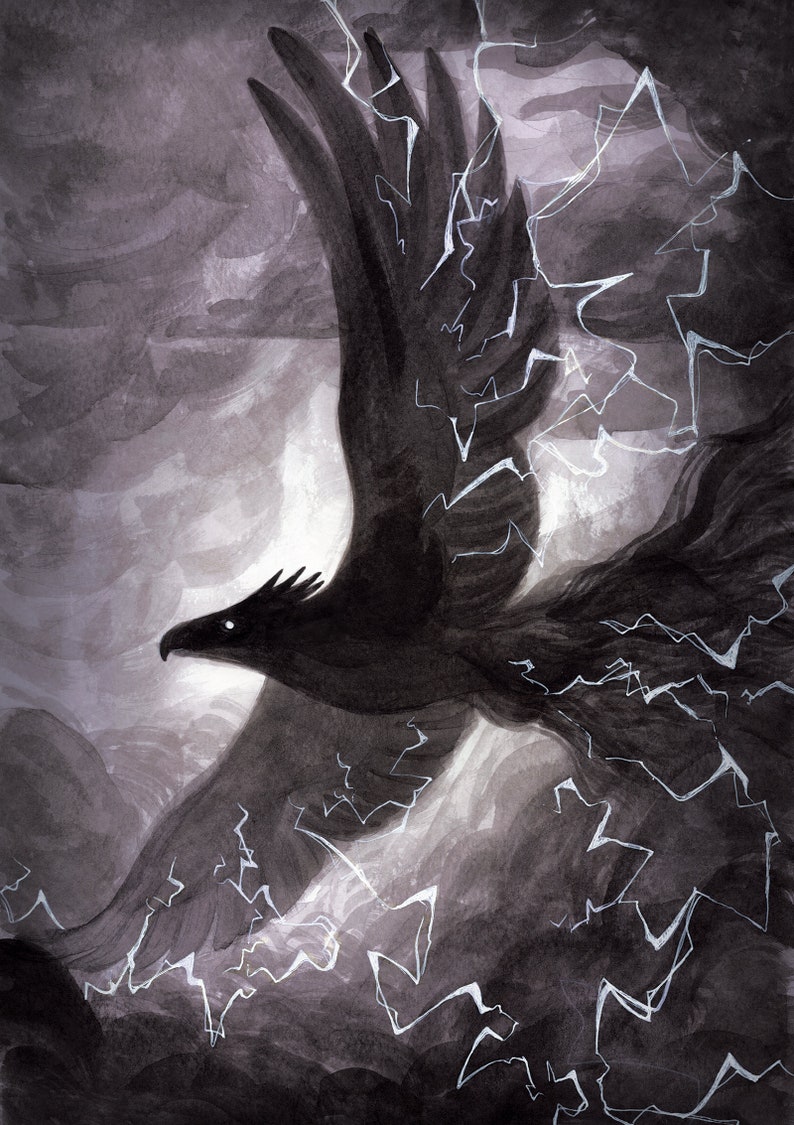

Yet for a short time, thousands of years ago, that bird shared territory with early Native Americans.Ĭould Teratornis merriami be the creature that inspired the myth of Thunderbird? Teratornis merriami, possibly the largest bird ever to fly, known only by its Latin name, died out following the last ice age. One intriguing theory suggests the memory of a much larger vulture may be the basis for the myth. But the condor was well known to many native groups. Researchers looking for Thunderbird’s identity turned to the California Condor, the largest bird in the West. According to the myth, Thunderbird was so large and flew so high, it carried the rain on its back and created lightning and thunder. Thunderbird was revered by many tribes throughout the West. But there is one myth – that of a huge bird called the Thunderbird – whose origins remain a mystery. In most, the species, or at least the family, of birds can be identified. The Thunderbird mythology parallels tales of the Roc from around the Indian Ocean as the roc, it is generally assumed to be based on real (though mythically exaggerated) species of birds, specifically the Bald Eagle, which is very common on the Northwest Coast.Bird myths are common in Native American folklore and history. The area of Thunder Bay, Ontario, is related in some ways to the Anishinaabe stories of thunderbirds.Ī famous story of the Thunderbird is "Thunderbird and Whale". A thunderbird pipe is used during the ceremony as well, and thunderbird medicine is prepared as well. The dancers often face the nest while dancing, and their hands and arms reach up towards the nest at times. During the sundance ceremony a thunderbird nest is put near the top of the tree of life. The Anishinaabe, who speak Ojibwa, one of the Three Fires Society, have many stories about thunderbirds. The Sioux believed that in "old times" the Thunderbirds destroyed dangerous reptilian monsters called the Unktehila. The story goes that other tribes soon forgot the nature of one of these thunderbird families, and when one tribe tried to take them as slaves the thunderbirds put on their feather blankets and transformed to take vengeance upon their foolish captors. Families of thunderbirds who kept to themselves but wore human form were said to have lived along the northern tip of Vancouver Island. There are stories of thunderbirds in human form marrying into human families some families may trace their lineage to such an event. The plural thunderbirds (as the Kwakwaka'wakw and Cowichan tribes believed) could shapeshift into human form by tilting back their beaks like a mask, and by removing their feathers as if it were a feather-covered blanket. It was also told that the thunderbird controlled rainfall. The Thunderbird only flew about to carry messages from one spirit to another. The singular Thunderbird (as the Nuu-chah-nulth thought of him) was said to reside on the top of a mountain, and was the servant of the Great Spirit.

All agree one should go out of one's way to keep from getting thunderbirds angry. In both cases, it is intelligent, powerful, and wrathful. The Native Americans believed that the giant Thunderbird could shoot thunderstones (lightening) from its eyes.ĭepending on the people telling the story, the Thunderbird is either a singular entity or a species. In masks, it is depicted as many-colored, with two curling horns, and, often, teeth within its beak.

Clouds are pulled together by its wingbeats, the sound of thunder made by its wings clapping, sheet lightning the light flashing from its eyes when it blinks, and individual lightning bolts made by the glowing snakes that it carries around with it. It is described as a large bird, capable of creating storms and thundering while it flies. The Ojibwa word for a thunderbird that is closely associated with thunder is animikii, while large thunderous birds are known as binesi.Īcross many North America indigenous cultures, the Thunderbird carries many of the same characteristics. The Kwakwaka'wakw have many names for the Thunderbird and the Nuu-chah-nulth (Nootka) called him Kw-Uhnx-Wa. The Lakota name for the Thunderbird is Wakį́yą. The Thunderbird's name comes from the common belief that the beating of its enormous wings causes thunder and stirs the wind.


 0 kommentar(er)
0 kommentar(er)
